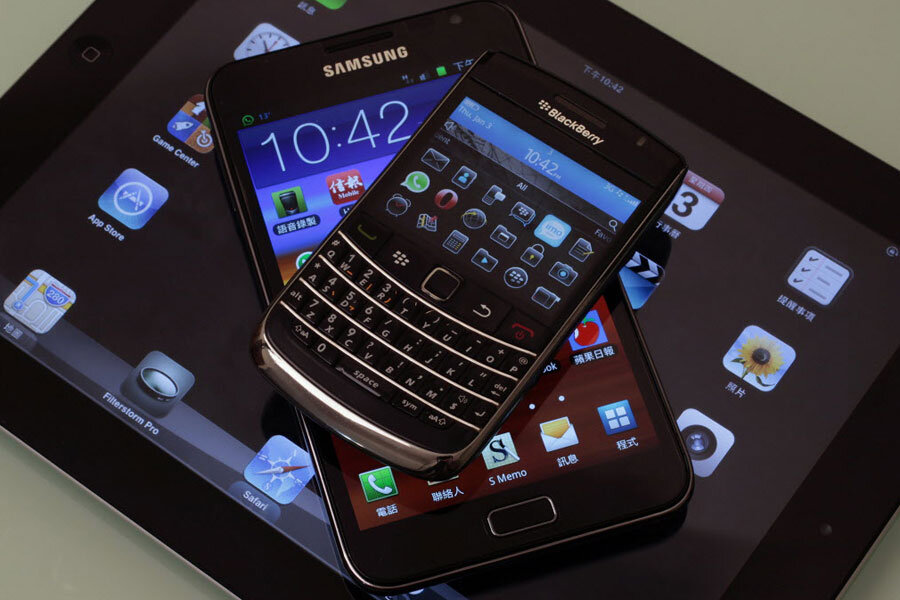Do smart phone sizes make a big difference?
Loading...
There was a time you could count on phones getting larger each year. Samsung's runaway success with the big-screen smartphone even spurred Apple to release a supersized model last fall. But if phones get any bigger will they be too hard to use?
That's the worry of some smartphone makers, and the reason why many of the new models this year didn't grow. LG even shrank the G Flex 2 to a 5.5-inch screen, as measured diagonally, compared with 6 inches before.
So, how much does size matter?
JUST THE RIGHT SIZE
"The size of the phone really is at the sweet spot," said Drew Bamford, corporate vice president of HTC Creative Labs, which studies how consumers use phones. Bamford said a larger phone would be too cumbersome to use with one hand.
That was also the thinking at Samsung, which has long promoted its phones as "the next big thing."
Hong Yeo, a senior designer at Samsung, said those who really need a larger screen could turn to other models, such as the 5.7-inch Galaxy Note 4. For the S6, 5.1 inches was "the perfect size for what we want to do," he said.
IDC analyst Ramon Llamas said the ideal display size tends to be 4.5 inches to 5.5 inches these days.
"Screens have grown faster than hands," said Rick Osterloh, Motorola's president.
The company's new Moto E phone is just slightly larger — with a display measuring 4.5 inches, compared with 4.3 inches for last year's model. Samsung's Galaxy S6 stays at 5.1 inches, while the new HTC One remains at 5 inches.
CHANGING COMPETITION
It might not be a coincidence that Android phone makers are playing down phone size just as Apple has caught up by making its iPhones bigger, a move that eliminated a key advantage Android phones had long enjoyed.
Now, Android phone makers are looking at other ways to persuade consumers to upgrade. For the Flex, it's a curved screen, along with self-repairing capabilities when the back gets scratched. Camera improvements are touted in the new Samsung and HTC phones. The new Samsung S6 phones also have better screen resolution even as the size remains the same.
FICKLE CONSUMERS
Consumers do like larger displays as they rely increasingly on mobile devices for entertainment and information. The larger screens also make typing easier. Preferences for larger phones can be seen in the high demand for both the iPhone 6 and 6 Plus, which made Apple the world's top smartphone maker in the final three months of 2014, according to Gartner.
But consumers want something comfortable to hold. Ramchan Woo, a vice president and head of mobile product planning at LG Electronics Inc., said the 6-inch display of the original G Flex was both a chief compliment and a chief complaint.
That said, what's acceptable "has been in flux to some degree for the past few years," HTC's Bamford said. A few years ago, the "sweet spot" was closer to 4 inches. Now, it's at about 5 inches. He said that as people see what they can do with larger screens, they are willing to put up with more.
Shoneel Kolhatkar, senior director of U.S. product marketing at Samsung, said that while the company believes the phone's size is right for now, he will "never say it will never increase."
There are some regional variations, too. Bamford said Asian markets tend to accept bigger phones, possibly because people there are more likely to carry bags, rather than use pockets to carry phones.
MORE THAN THE SCREEN SIZE
One trick to giving consumers a larger display without decreasing comfort: Shrink the phone's frame so that the overall size isn't bigger. But the frame is already minimal, and doing more poses an engineering challenge — and could make phones more expensive.
"The key innovation that we're driving toward is more screen as a percentage of the surface area," Motorola's Osterloh said. "We just try to make it more and more screen."







